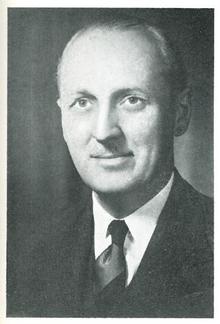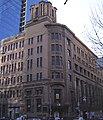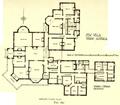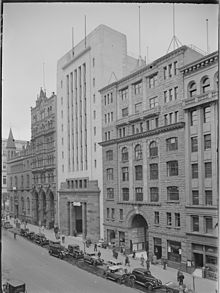Sir Roy Burman Grounds was an Australian architect. His early work included buildings influenced by the Moderne movement of the 1930s, and his later buildings of the 1950s and 1960s, such as the National Gallery of Victoria and the adjacent Victorian Arts Centre, cemented his legacy as a leader in Australian architecture.
Bates Smart is an architectural firm with studios in Melbourne and Sydney, Australia. Founded in 1853 by Joseph Reed, it is one of Australia's oldest architectural firms. Over the decades, the firm's practices involving architecture, interior design, urban design, strategy, sustainability and research, have been responsible for some of Australia’s most recognizable buildings.
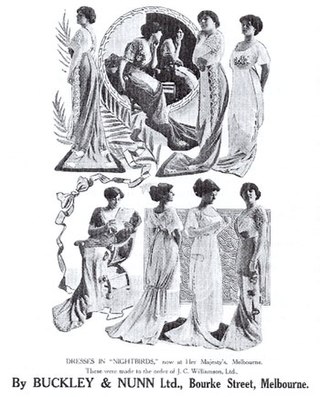
Buckley & Nunn was a department store in Melbourne, Victoria, Australia. It first opened its doors in 1851 as a drapery store and, in its heyday, competed creditably as a department store with Myer (1900). It occupied a succession of buildings on Bourke Street in Melbourne's City Centre until it was taken over by David Jones in 1982.

Seabrook and Fildes was an Australian architecture practice in Melbourne, Victoria that played a significant role in the introduction of modernist architecture that first occurred in the 1930s. They are most well known for the Dutch modernist inspired Mac.Robertson Girls High School, designed by Norman Seabrook in 1933.
Hudson and Wardrop was formed by Philip Burgoyne Hudson and James Hastie Wardrop MM in 1919. Hudson was born in Auckland, New Zealand on 6 February 1887 and died in 1952 at the age of 64. James Wardrop was born in 1891 and died on 25 July 1975 at the age of 84. Both architects were veterans who served in the war and moved on to study under Charles D'Ebro. The Australian established architects are well known for their designs of chapels, universities, colleges, factories, hotels, and public monuments in Melbourne, the Shrine of Remembrance being the most prominent out of the few. They were also responsible for the compiling of The National War Memorial of Victoria: the first brochure on the first permeated design.
Marcus Barlow (1890–1954) was a prominent Australian architect in the interwar period, who designed a number of notable central city buildings in his home-town of Melbourne. He is best known for the 1932 Manchester Unity Building, whose Gothic corner spire dominates the major intersection of the city.

Alfred Louis Smith and Arthur Ebden Johnson were architects who designed many public buildings of Melbourne in the classical style.

Brigadier Sir Bernard Evans, was an Australian army officer, architect, builder and Lord Mayor of Melbourne (1959–1961).

The architecture of Melbourne, the capital of the state of Victoria and second most populous city in Australia, is characterised by a wide variety of styles in various structures dating from the early years of European settlement to the present day. The city is particularly noted for its mix of Victorian architecture and contemporary buildings, with 74 skyscrapers in the city centre, the most of any city in the Southern Hemisphere.
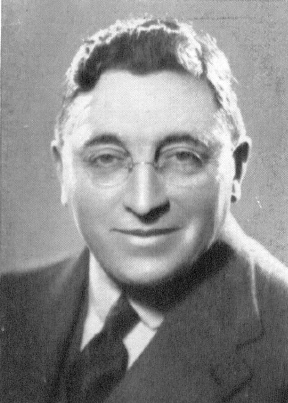
Joseph Plottel was a British born architect who was active in Melbourne, Australia between 1911 and World War II, working in a range of revival styles, as well as Art Deco in the 1930s. He is best known for the St Kilda Synagogue (1927) and the Footscray Town Hall (1936).

The Head Office building of The Bank of New South Wales was designed by prolific Melbourne architect Joseph Reed and constructed at 368–374 Collins St, Melbourne, Australia, in 1856–1857. Reed was awarded first prize, worth £75, in the Bank of New South Wales’ competition to design their new Melbourne headquarters on a vacant block of land facing the prominent Criterion Hotel. Reed's design was chosen for its extensive use of ornamentation on the relatively small scale building. The façade of the Bank of New South Wales building is prized as a leading example of mid nineteenth century Renaissance Revival architecture in Melbourne. Structural shortcomings and the desire for expansion led to the building's demolition in 1932. Reed's original National Trust heritage-listed façade was preserved and gifted to the University of Melbourne, where it can still be seen on the western face of the Melbourne School of Design, opposite Union Lawn.

Dr Ernest Fooks was an influential European-trained architect who made a significant contribution to architecture, town planning, and design education in Australia and to the cultural life of Melbourne after emigrating to the city just before the Second World War.
Geoffrey Harley Mewton (1905–1998) was an Australian architect and leading proponent of modern architecture in Melbourne during the 1930s. He is best known for the Woy Woy flats at Elwood, Victoria, amongst the first flat blocks in Melbourne to show the influence of the European Modern movement.
Acheson Best Overend was an Australian architect. He is best known for the Cairo Flats in Fitzroy, built 1935—1936, a daringly Modernist design for Melbourne in the 1930s.
Douglas Alexandra was an Australian architect, whose works were an important contribution to modernist architecture in Melbourne, Australia.
Originally known as Stephenson and Meldrum (1921–1937), Stephenson and Turner (1938–1995) was a prominent Australian architectural firm, best known for the pioneering modernism of their numerous hospital designs of the 1930s and 1940s.
William Arthur Purnell F.R.A.I.A., generally known as Arthur Purnell, and sometimes A W Purnell, was an Australian born architect who practiced in Canton, China in the 1900s, and from 1910 mainly in Melbourne, Australia. He is most noted for the few designs in Melbourne that include Chinese references.
Oakden, Addison and Kemp was an Australian architectural firm in Melbourne, Victoria. While it was short lived, existing from only 1887 to 1892, they designed a number of outstanding projects, and all three members designed many more notable projects in earlier and later partnerships.
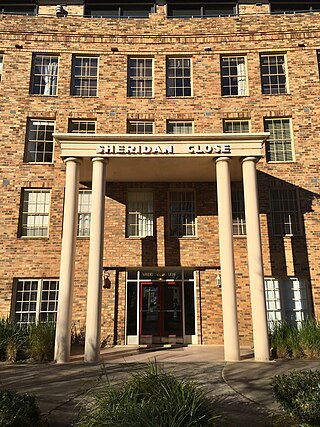
Sheridan Close is a low-rise apartment complex situated on 485–489 St Kilda Road, Melbourne, Victoria, Australia. It has direct access onto Fawkner Park at the rear of the building. It was designed by the architect Sir Bernard Evans, who later became Lord Mayor of Melbourne, and was built by Prentice Builders. Sheridan Close is described as "a stylistic hybrid", combining a concave regency façade, Georgian proportioned windows and Art Deco influences, with serrated side elevations to ensure views of St Kilda Road.
Sydney Wigham Smith was an architect in Melbourne, Australia, principal of the firm of Sydney Smith, Ogg and Serpell.
